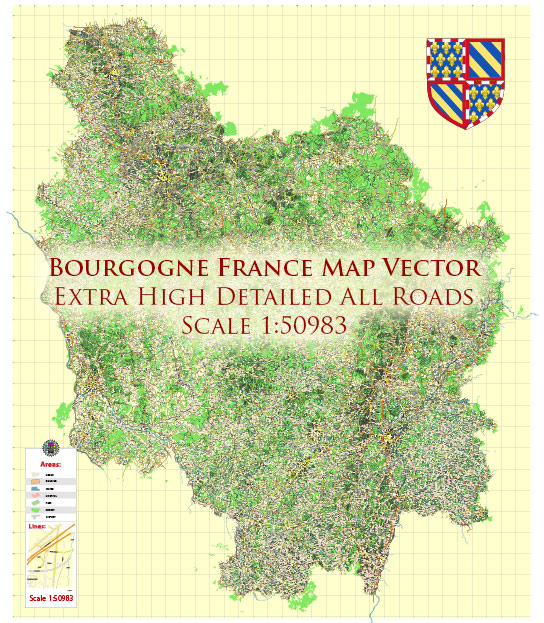Bourgogne, also known as Burgundy in English, is a historic region located in east-central France. The region is renowned for its rich history, vineyards, gastronomy, and charming landscapes. While Bourgogne is not characterized by large urban centers, it does have several towns and cities that offer a range of amenities. Here are some notable urban areas in Bourgogne, each with its own unique characteristics:
- Dijon: Dijon is the capital city of the Bourgogne region and is known for its well-preserved medieval and Renaissance architecture. The city is famous for its mustard, and you can explore the historic center with its narrow streets, the Palace of the Dukes of Burgundy, and the local markets. Dijon offers a mix of cultural attractions, shopping, and dining.
- Beaune: This town is located in the heart of the Burgundy wine region and is surrounded by vineyards. Beaune is known for its well-preserved medieval architecture, including the Hospices de Beaune, a medieval hospital with a colorful tiled roof. The town is a hub for wine enthusiasts, with numerous wine cellars and tasting opportunities.
- Auxerre: Situated on the banks of the Yonne River, Auxerre is a charming town with a rich history. The Cathedral of Saint Étienne and the Abbey of Saint-Germain are notable landmarks. Auxerre offers a mix of historical sites, riverside walks, and local markets.
- Chalon-sur-Saône: Positioned along the Saône River, Chalon-sur-Saône is known for its lively atmosphere. The town features a mix of medieval and Renaissance architecture, and visitors can explore the Niepce Museum, dedicated to the inventor of photography, Nicephore Niepce. The town also hosts an annual photography festival.
- Nevers: Nevers is located on the Loire River and is known for its ceramics. The town has a cathedral, Saint-Cyr-Sainte-Julitte Cathedral, and the Palais Ducal, a former ducal palace. Nevers offers a tranquil atmosphere and is known for its blue and white earthenware.
These urban areas in Bourgogne provide a mix of historical, cultural, and gastronomic experiences. Visitors can enjoy local cuisine, explore historic sites, and appreciate the picturesque surroundings, including vineyards and rivers. Keep in mind that while these towns offer amenities, the region is also celebrated for its rural landscapes and wine-producing countryside.


 Author: Kirill Shrayber, Ph.D.
Author: Kirill Shrayber, Ph.D.